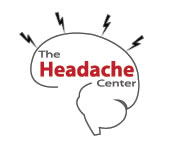Common Facts about Headaches
How Chiropractic Care can help with Headaches & Migraines
If you have a headache, you’re not alone. Nine out of ten Americans suffer from headaches. Some are occasional, some frequent, some are dull and throbbing, and some cause debilitating pain and nausea.
What do you do when you suffer from a pounding headache? Do you grit your teeth and carry on? Lie down? Pop a pill and hope the pain goes away? There is a better alternative.
Research shows that spinal manipulation – the primary form of care provided by doctors of chiropractic – may be an effective treatment option for tension headaches and headaches that originate in the neck.
A report released in 2001 by researchers at the Duke University Evidence-Based Practice Center in Durham, NC, found that spinal manipulation resulted in almost immediate improvement for those headaches that originate in the neck, and had significantly fewer side effects and longer-lasting relief of tension-type headache than a commonly prescribed medication.
Also, a 1995 study in the Journal of Manipulative and Physiological Therapeutics found that spinal manipulative therapy is an effective treatment for tension headaches and that those who ceased chiropractic treatment after four weeks experienced a sustained therapeutic benefit in contrast with those patients who received a commonly prescribed medication.
Common Headache Triggers
Headaches have many causes, or “triggers.” These may include foods, environmental stimuli (noises, lights, stress, etc.) and/or behaviors (insomnia, excessive exercise, blood sugar changes, etc.). About 5 percent of all headaches are warning signals caused by physical problems.
Ninety-five percent of headaches are primary headaches, such as tension, migraine, or cluster headaches. These types of headaches are not caused by disease. The headache itself is the primary concern.
“The greatest majority of primary headaches are associated with muscle tension in the neck,” says Dr. George B. McClelland, a doctor of chiropractic from Christiansburg, VA. “Today, Americans engage in more sedentary activities than they used to, and more hours are spent in one fixed position or posture. This can increase joint irritation and muscle tension in the neck, upper back and scalp, causing your head to ache.”
Stress is the most commonly reported trigger for tension headaches.
Risk factors for tension headache include:
Being a woman. One study found that almost 90 percent of women and about 70 percent of men experience tension headaches during their lifetimes.
Being middle-aged. The incidence of tension headaches appears to peak in the 40s, though people of all ages can get this type of headache.
Because tension headaches are so common, their effect on job productivity and overall quality of life is considerable, particularly if they’re chronic. The frequent pain may render you unable to attend activities. You might need to stay home from work, or if you do go to your job, your ability to function is impaired.
You’re likely to start by seeing your family doctor. You then may be referred to a doctor who specializes in treating nervous system disorders, such as headache (neurologist).
What Can You Do?
The ACA suggests the following:
If you spend a large amount of time in one fixed position, such as in front of a computer, on a sewing machine, typing or reading, take a break and stretch every 30 minutes to one hour. The stretches should take your head and neck through a comfortable range of motion.
Low-impact exercise may help relieve the pain associated with primary headaches. However, if you are prone to dull, throbbing headaches, avoid heavy exercise. Engage in such activities as walking and low-impact aerobics.
Avoid teeth clenching. The upper teeth should never touch the lowers, except when swallowing. This results in stress at the temporomandibular joints (TMJ) – the two joints that connect your jaw to your skull – leading to TMJ irritation and a form of tension headaches.
Drink at least eight 8-ounce glasses of water a day to help avoid dehydration, which can lead to headaches.
What can a Chiropractor for Me?
Your doctor of chiropractic may do one or more of the following if you suffer from a primary headache:
Perform spinal manipulation or chiropractic adjustments to improve spinal function and alleviate the stress on your system.
Provide nutritional advice, recommending a change in diet; and perhaps the addition of B complex vitamins.
Offer advice on posture, ergonomics (work postures), exercises, and relaxation techniques. This advice should help to relieve the recurring joint irritation and tension in the muscles of the neck and upper back.
“Doctors of chiropractic undergo extensive training to help their patients in many ways – not just back pain,” says Dr. McClelland. “They know how tension in the spine relates to problems in other parts of the body, and they can take steps to relieve those problems.”
Dr. Mullens is proud to offer headache and migraine treatment all three of our locations. Schedule an appointment today and learn how we can help relieve your headache woes.
Some Great Articles!
http://www.mayoclinic.org/diseases-conditions/tension-headache/basics/definition/CON-20014295?p=1
http://www.nlm.nih.gov/medlineplus/ency/article/000797.htm
http://www.livestrong.com/article/250546-chiropractic-migraine-treatment/
Local Headache Treatment in the North Huntingdonand and Murrysville Areas
If you think you have a headache problem, contact us or visit us at anyof our Headache Centers in Murrysville, Irwin, and North Huntingdon.
